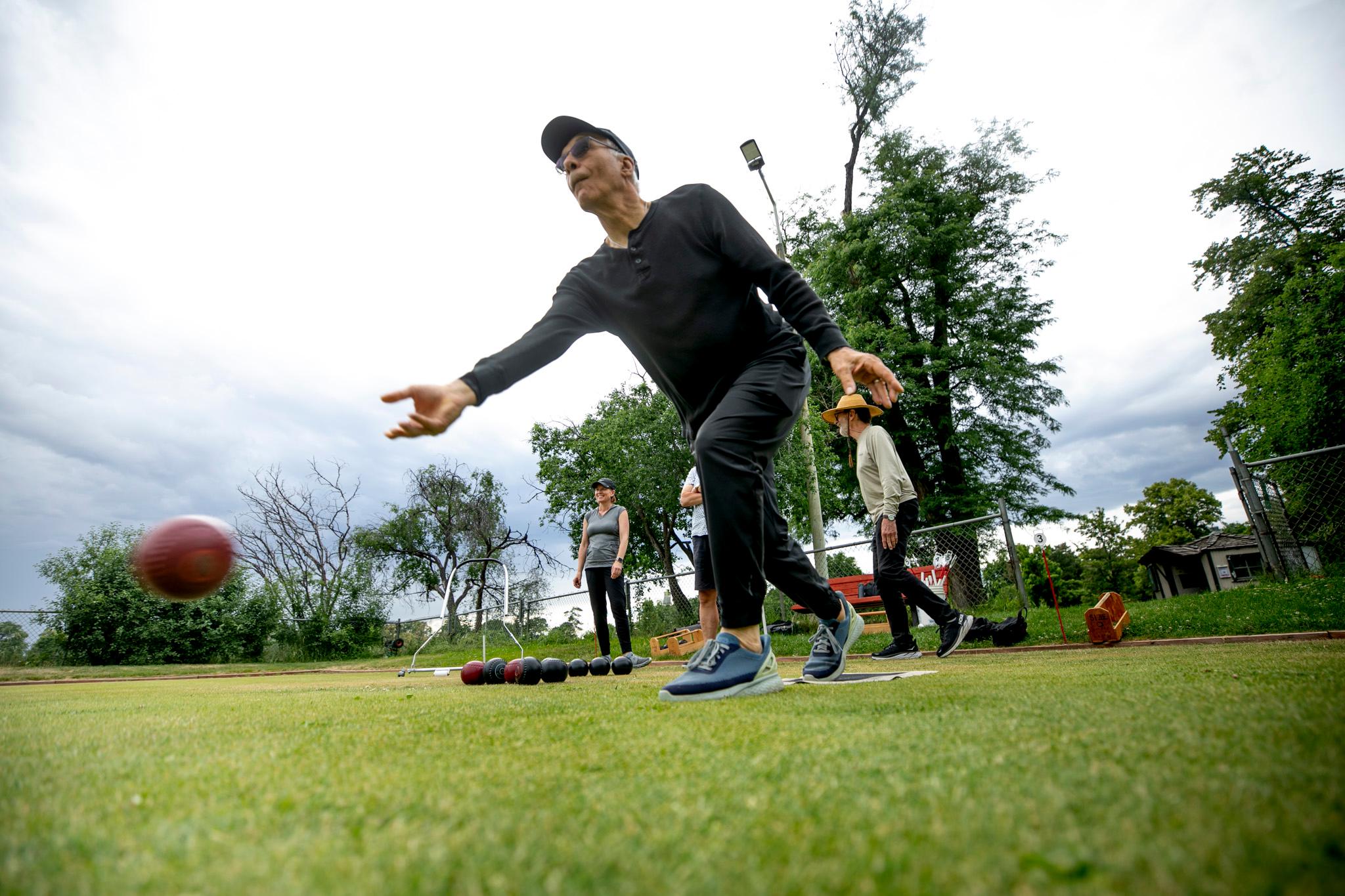
Imagine my chagrin when I could not find a single pedestrian crosswalk button downtown to illustrate this story. That's on purpose, said Steve Hersey, Denver director of traffic operations.
"In many of the busy pedestrian areas of downtown, our assumption is that we're going to have pedestrians coming through every cycle," he said. "Instead of worrying about pushing a button, all they've got to do is wait."
So of the 1,300 walk signals around downtown Denver, there are roughly 700 to 900 signals with crosswalk buttons, Hersey said. Do they do anything? Absolutely, says Hersey.
Most crosswalk buttons cause a walk signal
Traffic cycles around the city last 75 seconds to 2 minutes. When a pedestrian presses a crosswalk button, that ensures that a walk signal will come when it's the pedestrian's turn to cross.
The buttons don't mean you get that signal any faster than you otherwise would. But they do ensure pedestrians should only be waiting around two minutes for their turn to cross the street. Most of the time.
"Can I say that 100 percent of our buttons are working at this moment in time? No, I cannot say that," Hersey said. "We do not have a way to monitor every push button to know if there's a short in the circuit."
Where the buttons end up is a matter of maximizing efficient car travel
Colorado Boulevard is one example of where you'll find crosswalk buttons.
"Some of the cross streets have a lot of pedestrian traffic, others have just a smattering throughout the day. We want to be as efficient as we can with the vehicular traffic, meaning we want to give as much green time to the vehicular traffic as possible," Hersey said.
Experienced pedestrians generally don't need the button, Hersey said, but for others, the button can provide a measure of comfort.
"We need to have buttons so people are comfortable. 'Hey, I don't walk that much, I'm scared to cross Colorado Boulevard, oh I got a button, I know if I push it and I'm patient, I will get that white hand,'" he explained.
And that means that not all Denver crosswalk buttons actually work, per se.
Having a crosswalk button creates an expectation with the public, Hersey said. Even if the agency decides that signal should automatically have a pedestrian signal every cycle, the button stays because some people want it.
"We can't always say, 'Well, what we're doing is safe. I don't care how people feel,'" Hersey said.
In those cases, the controller is programmed so that even if the button is not pushed, the walk phase is still going to come up every time.
"If somebody hangs out at an intersection for 10 minutes and they notice no one was there, nobody pushed the button, but [the walk signal] came up, they'll discover our little secret," Hersey said.
Don't bother standing at random intersections for 10 minutes at a time, though. Hersey did share one secret poseur button. He described it as a north to south crossing on the west side of Colfax.
At one point, it was a working button, but a certain group of people working in the building across the street reached out.
"Many of the state legislative folks would go from the building on the north side of Colfax over to the Capitol. And we heard concerns that they didn't feel like the button was working properly all the time, so we said, 'Fine, let's just [make the signal come on automatically]. But if you go out there, you will realize there is a button."
All told, Hersey thinks that less than 5 percent of crosswalk buttons are similarly cosmetic.
Why not make all walk signals automatic? Again, it comes down to maximizing car traffic.
"We could adopt a very conservative approach, which I feel would be an unbalanced approach, where we say we are going to forsake vehicular efficiency for the sake of pedestrian safety," he said.
"It may not make sense during different times of the day and there's a lot of intersections where the number of pedestrians that cross is so small. Let's say you have three or four crossings per day, let's say you have a one-minute cycle. There's 1,440 cycles in a day, you want every one of those crossings to provide a crossing when there's only three people crossing all day?"













